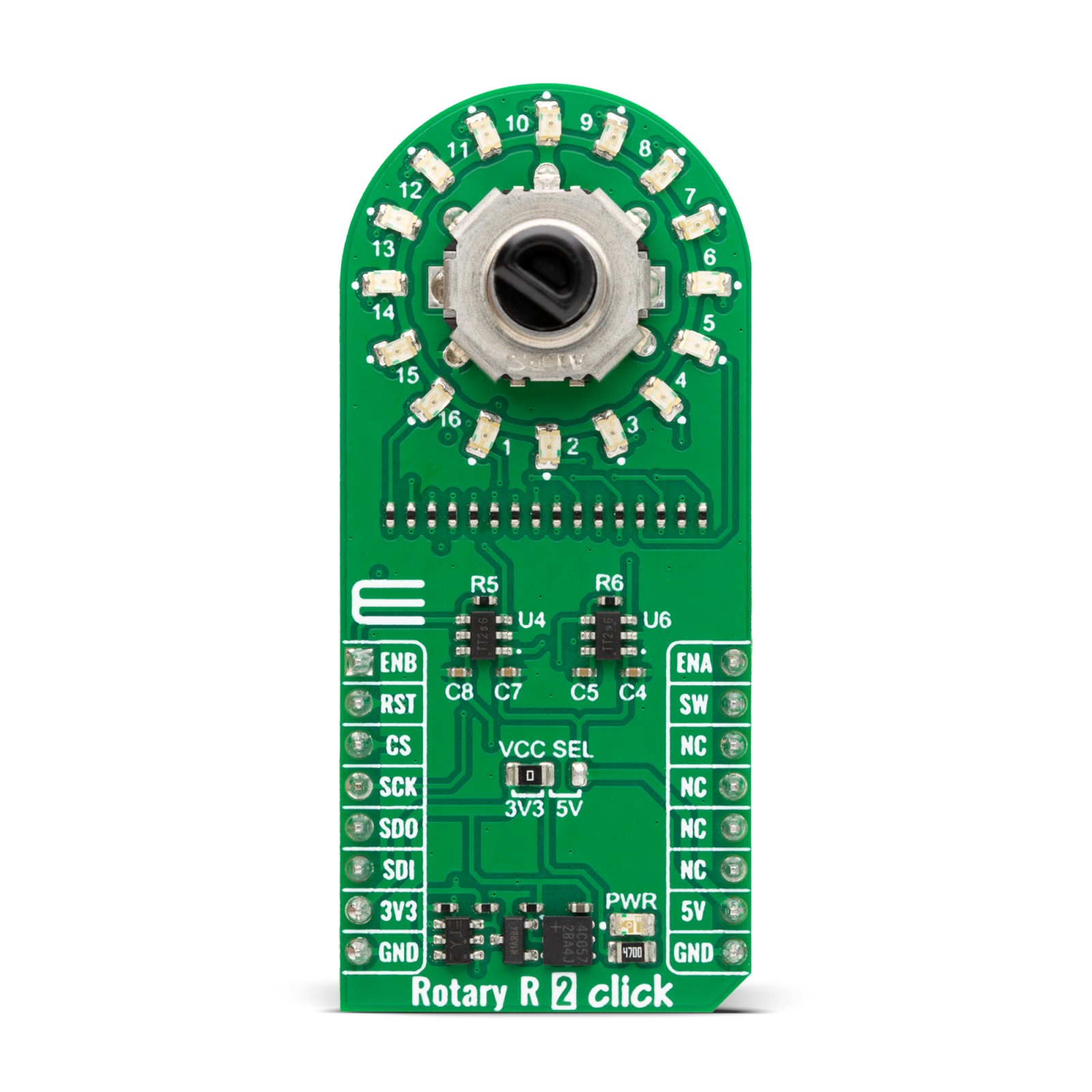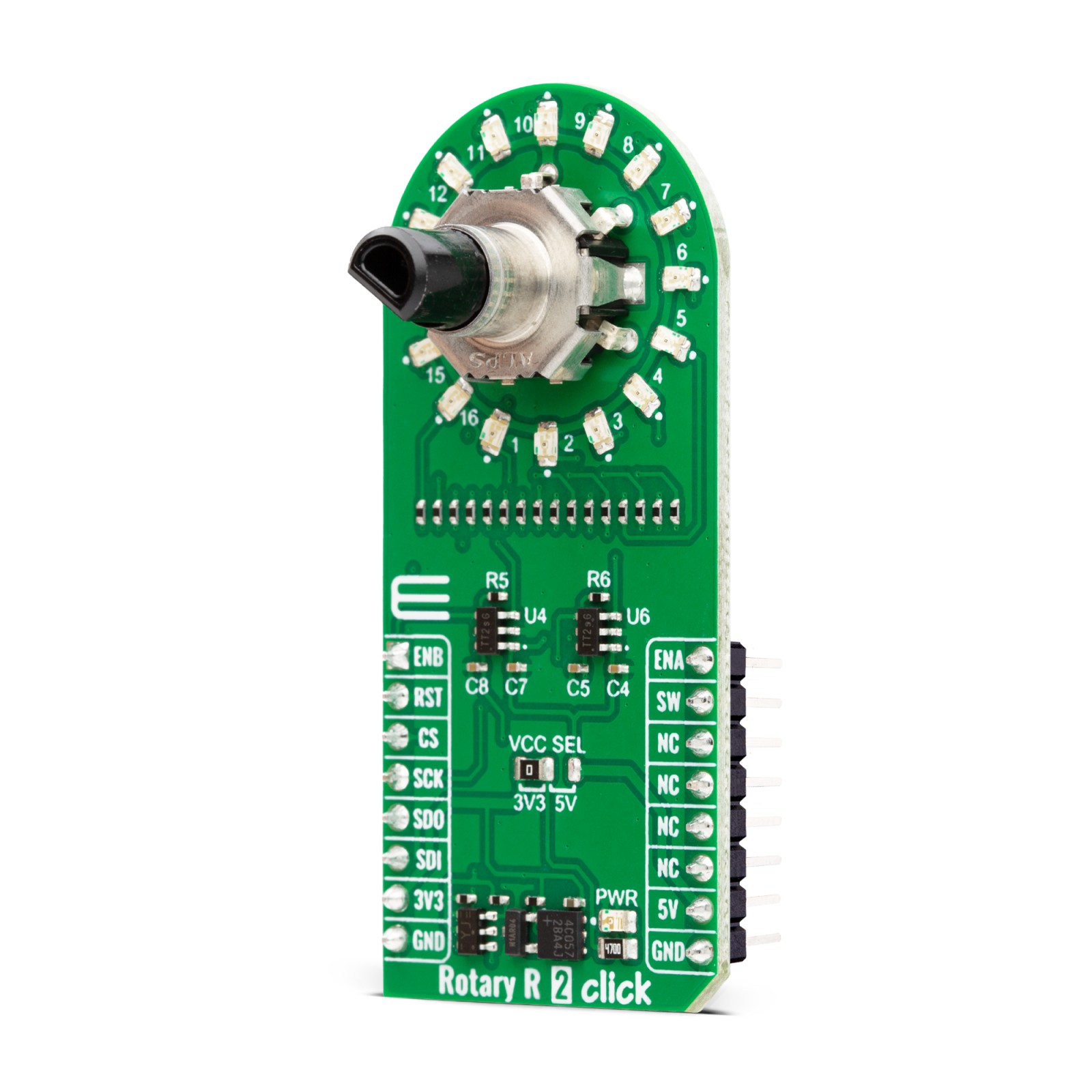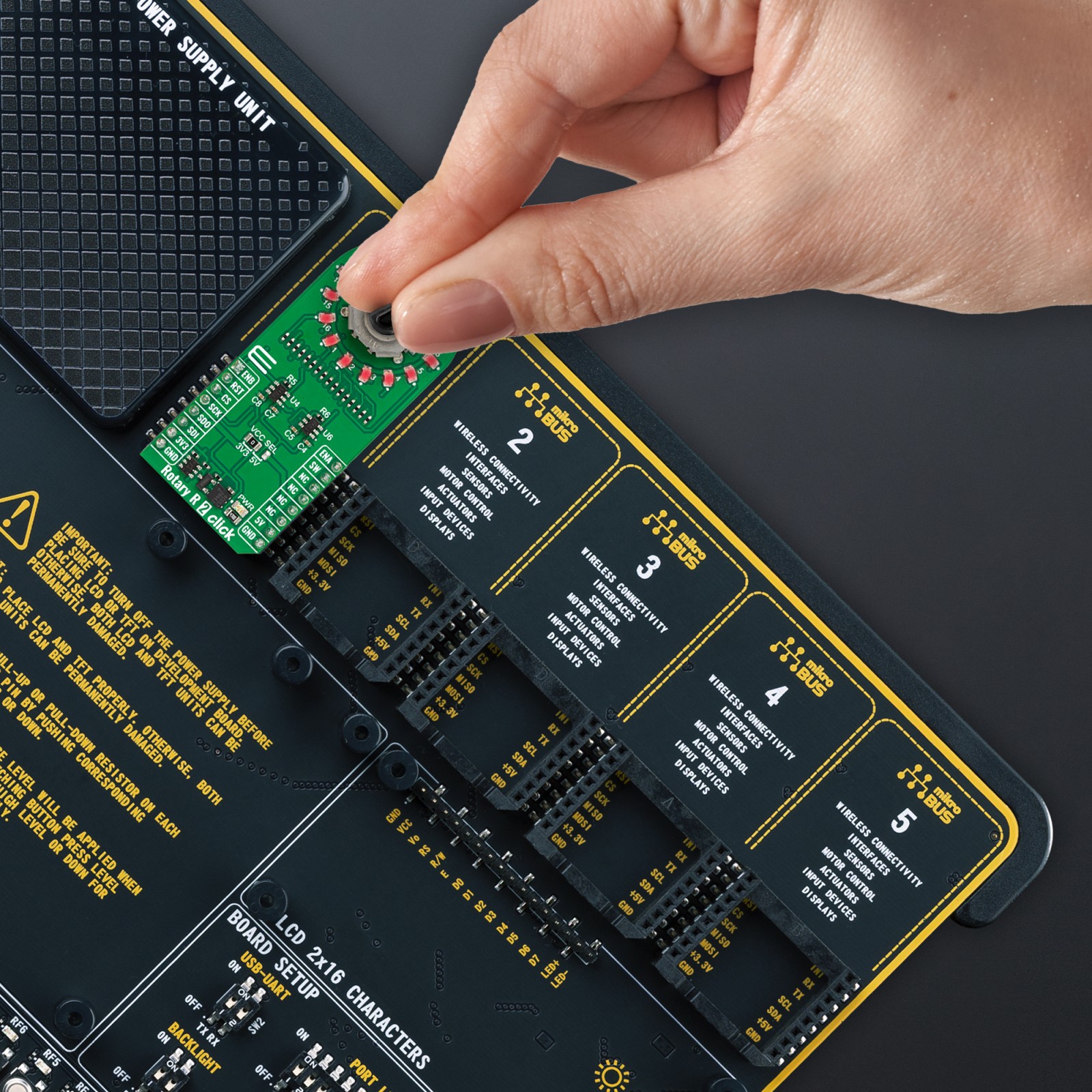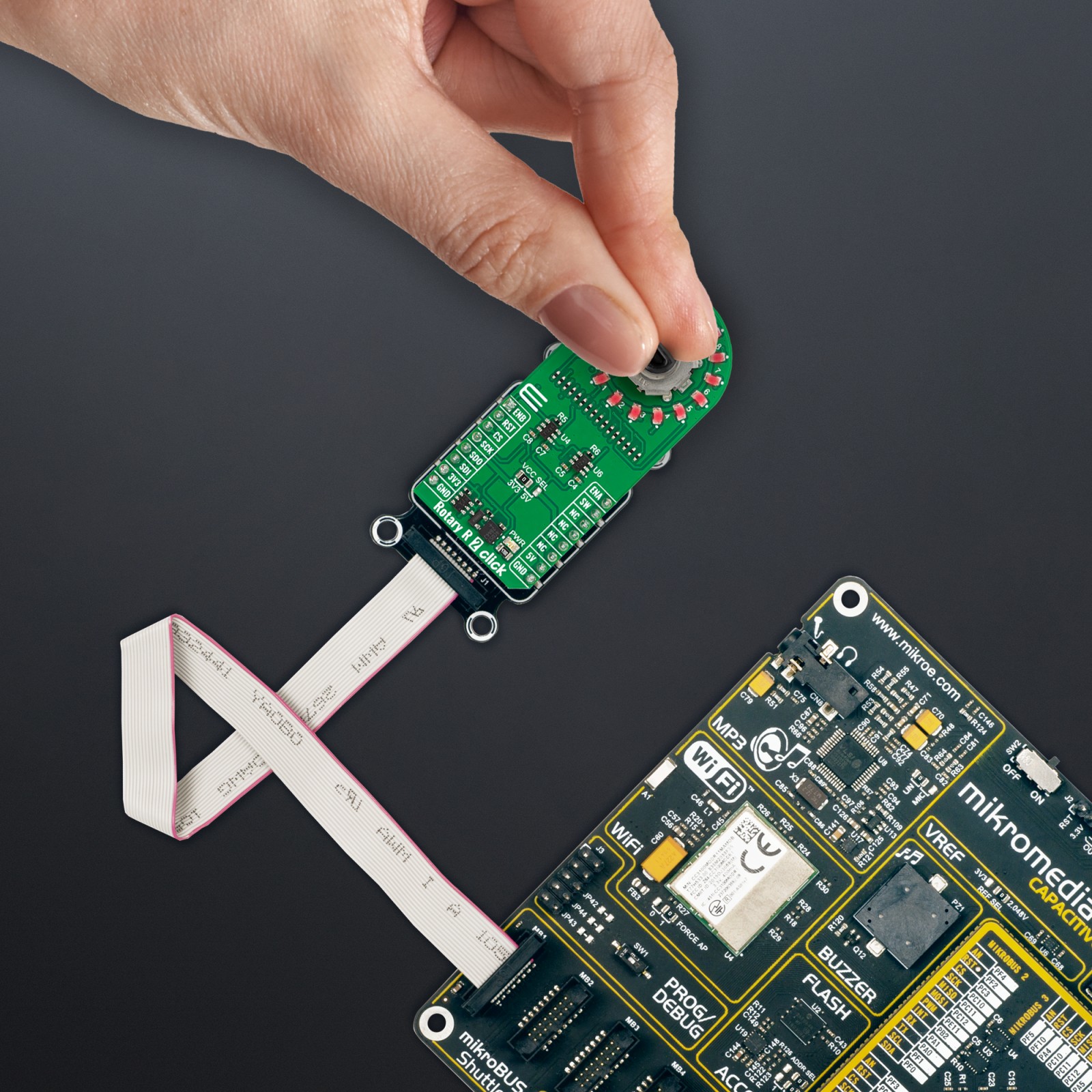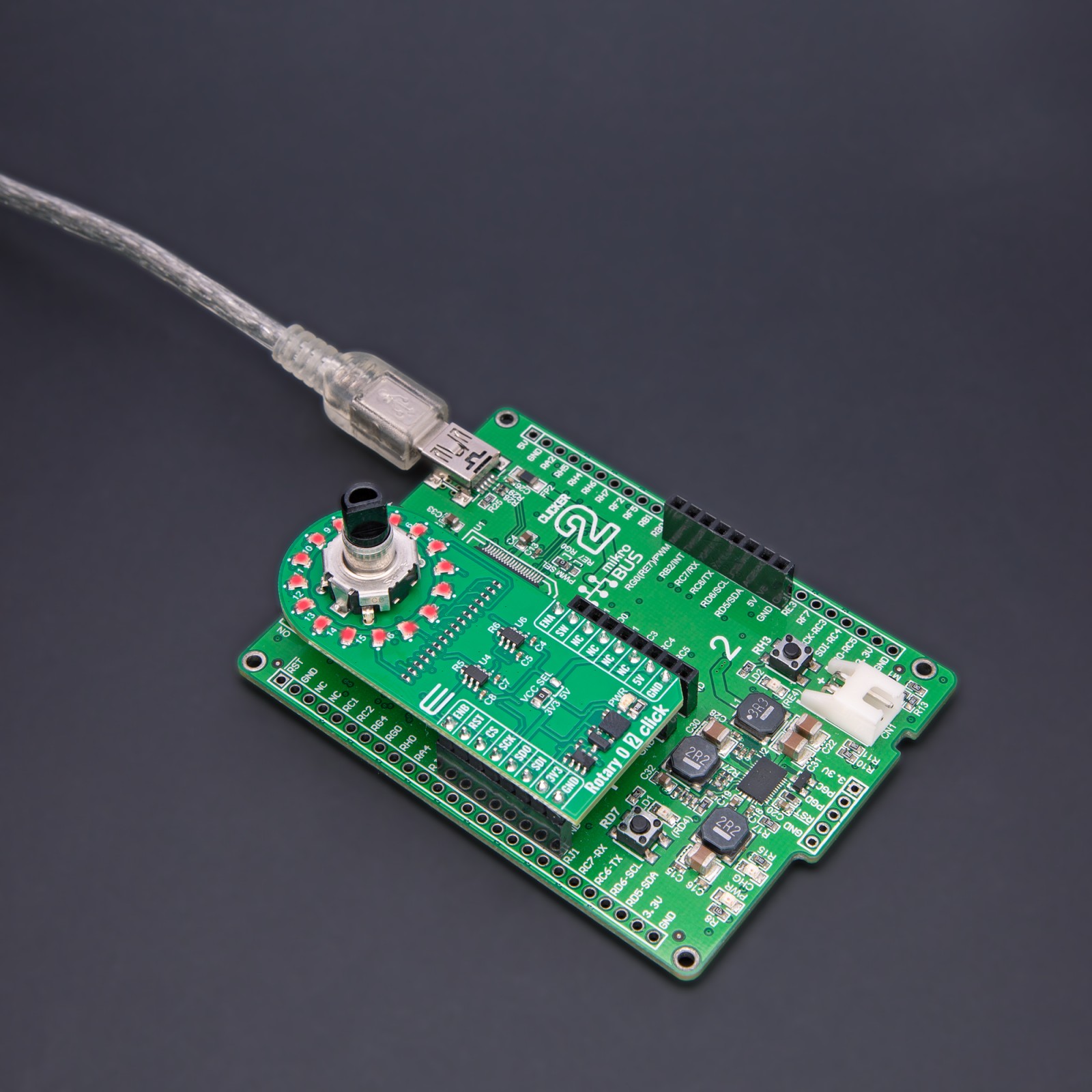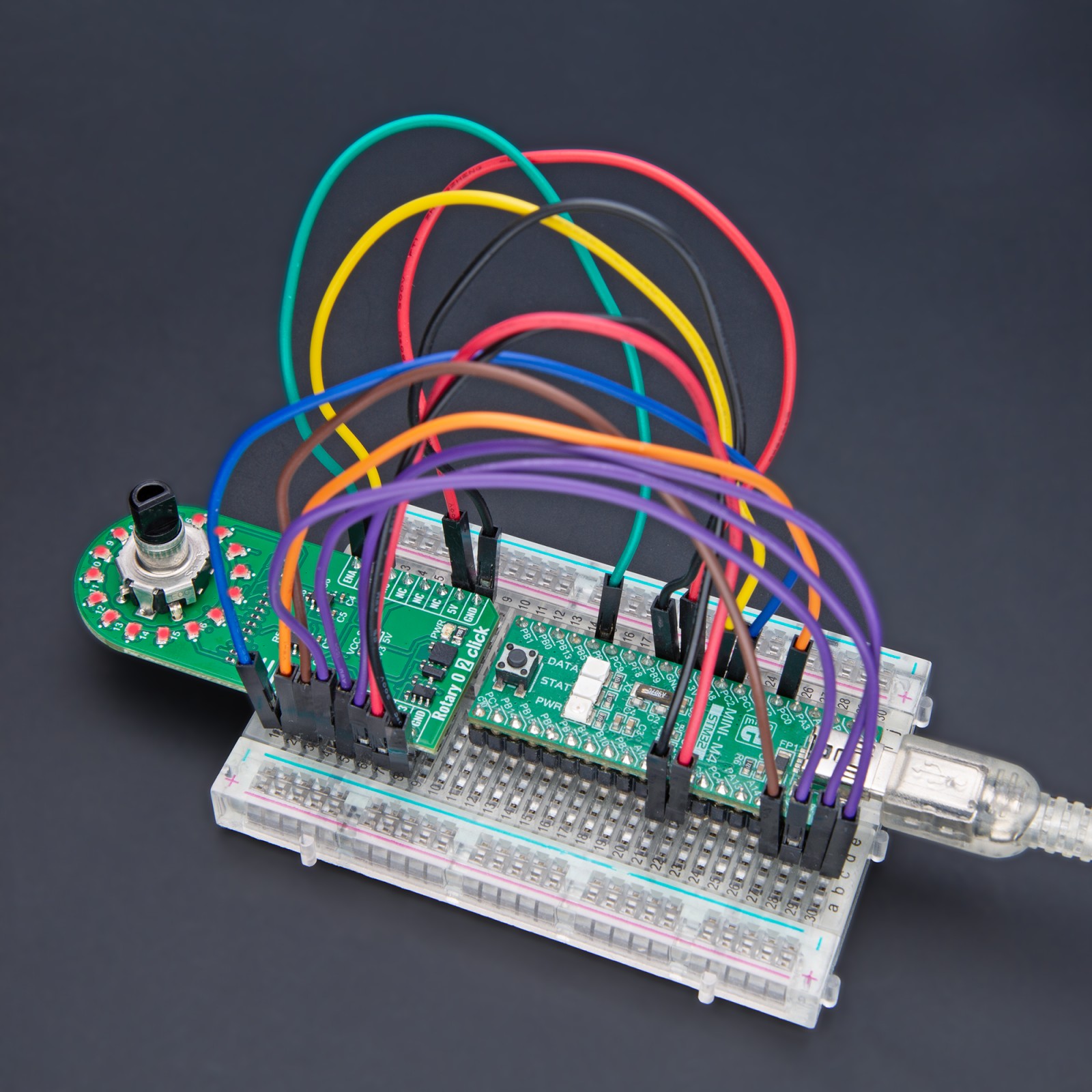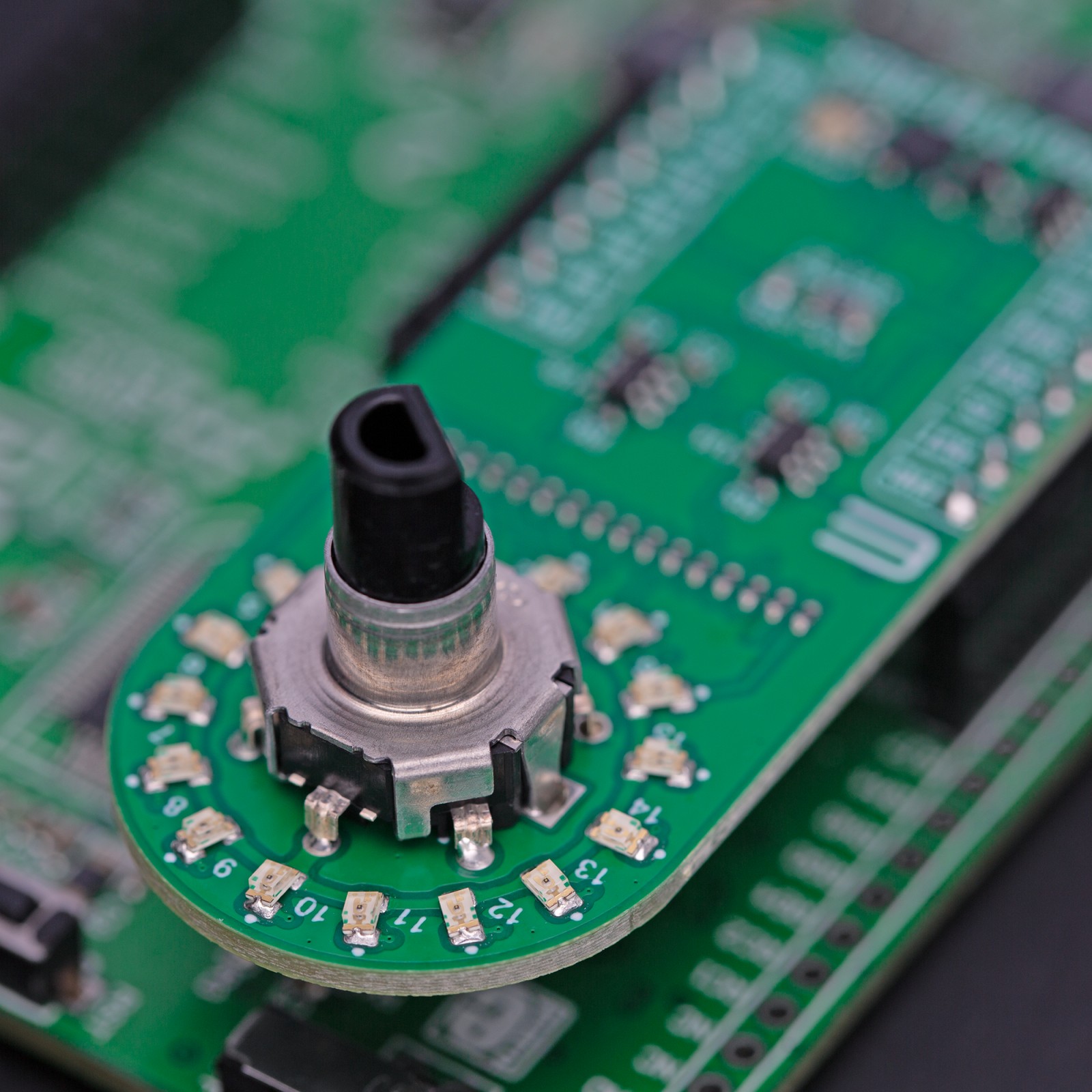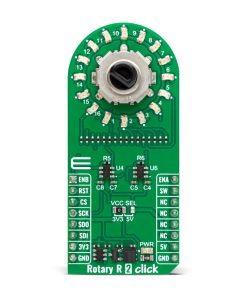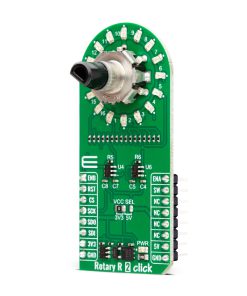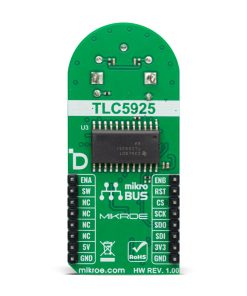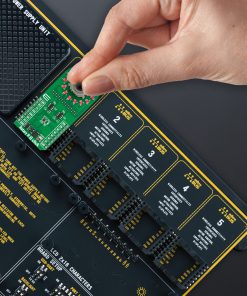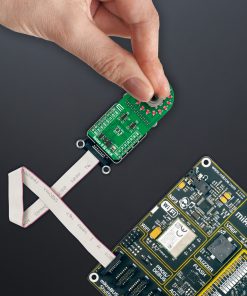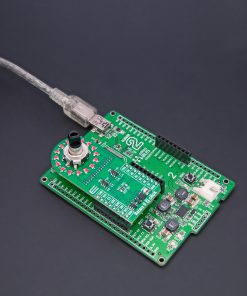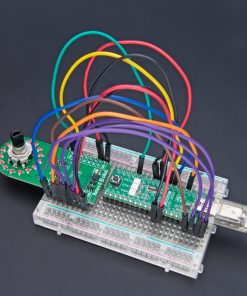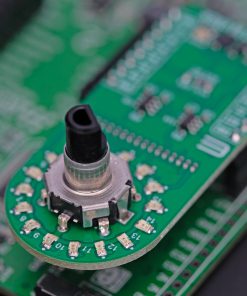Rotary R 2 Click
R430.00 ex. VAT
Rotary R 2 Click is a compact add-on board that allows you to add a precision input knob to your design. This board features the TLC5925, a low-power 16-channel constant-current LED sink driver from Texas Instruments that, combined with a high-quality rotary encoder from ALPS, the EC12D1564402, allows you to add a precision input knob to your design. It also features an LED ring composed of 16 individual red LEDs that can visually represent the encoder position and more. This Click board™ makes the perfect solution for the development of various interesting visual effects for any application, such as flexible position, value indicator, and more. If you want to see this Click board™ in action take a look at our latest YouTube video.
Rotary R 2 Click is fully compatible with the mikroBUS™ socket and can be used on any host system supporting the mikroBUS™ standard. It comes with the mikroSDK open-source libraries, offering unparalleled flexibility for evaluation and customization. What sets this Click board™ apart is the groundbreaking ClickID feature, enabling your host system to seamlessly and automatically detect and identify this add-on board.
Stock: Lead-time applicable.
| 5+ | R408.50 |
| 10+ | R387.00 |
| 15+ | R365.50 |
| 20+ | R351.74 |

